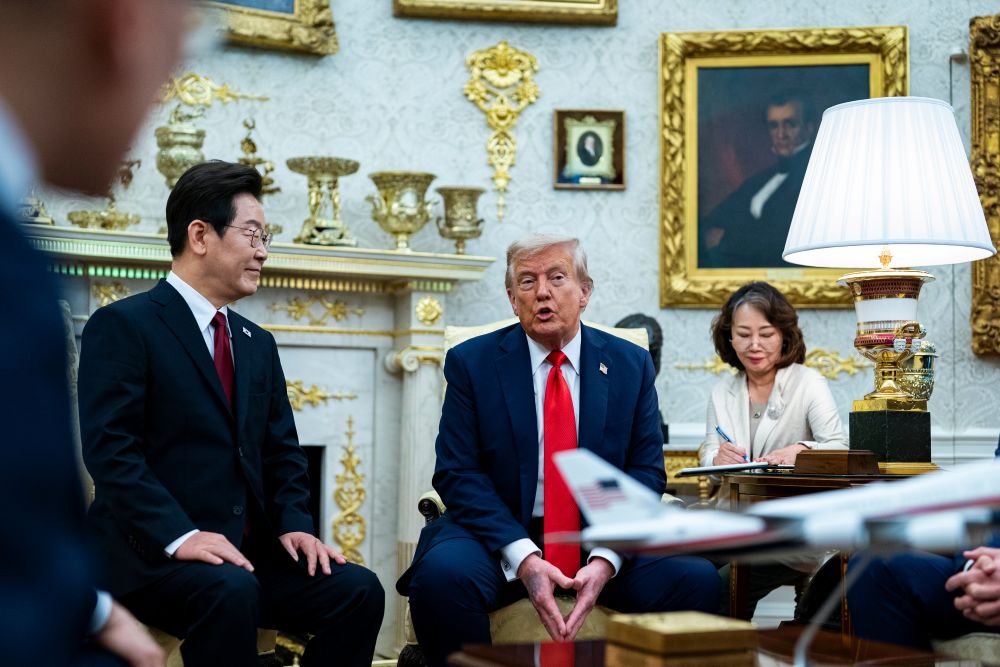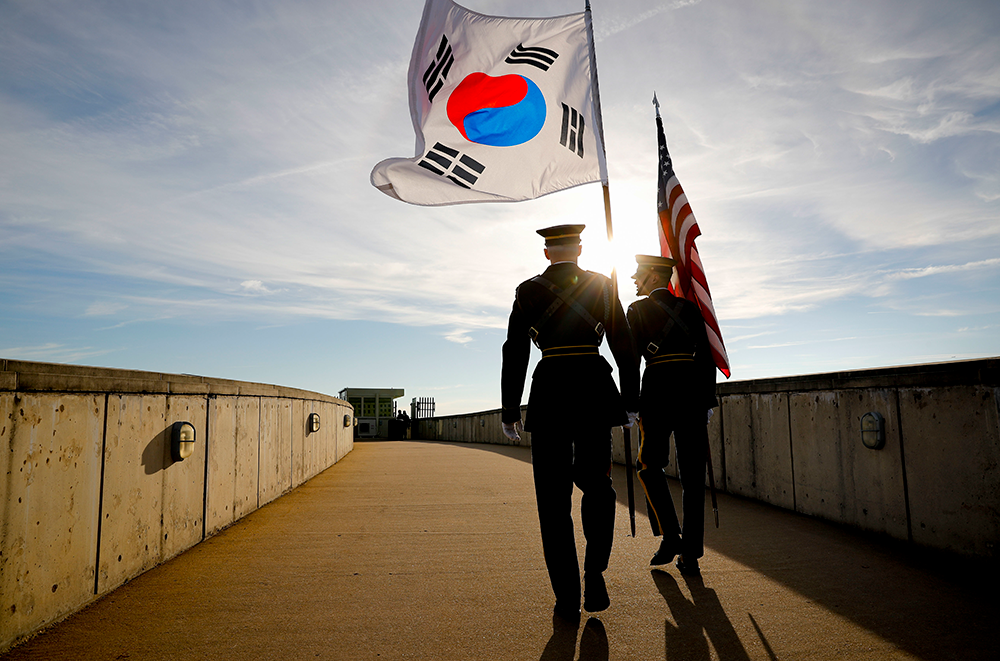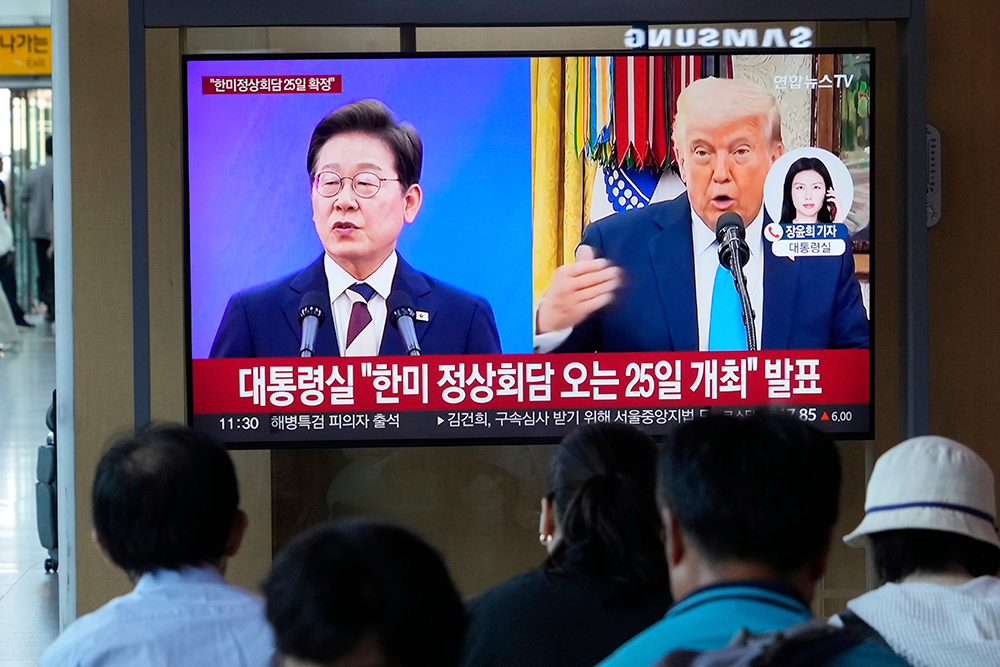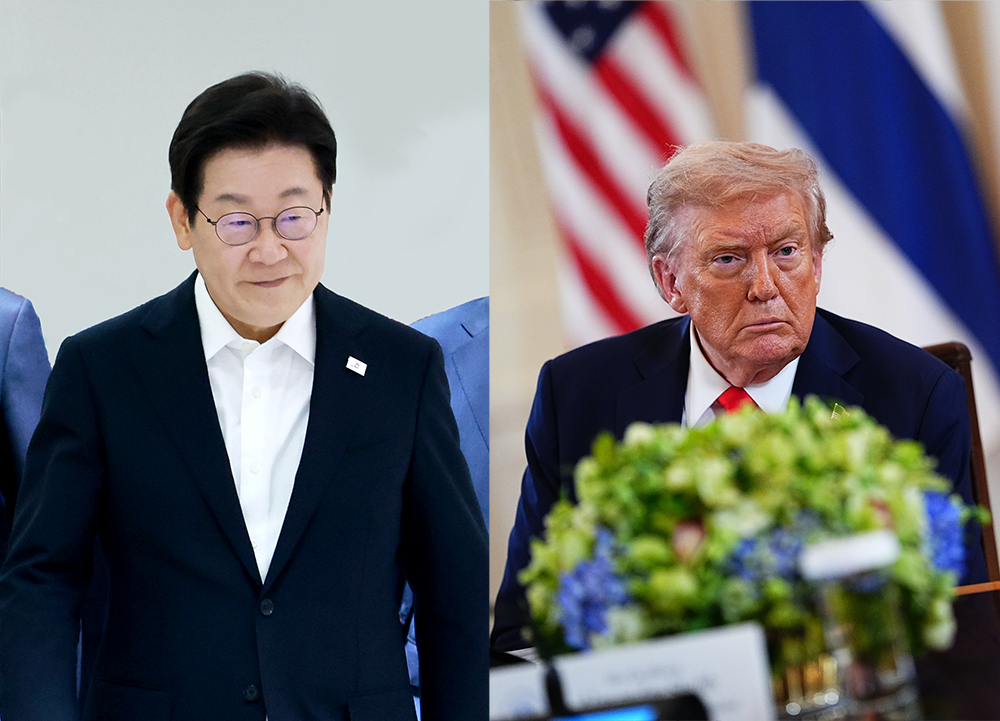- #South Korea
- #US Foreign Policy
- #US-ROK Alliance

Key Takeaways:
- The Lee–Trump summit avoided disaster but exposed deep cracks, urging Seoul to take the lead in shaping alliance strategy rather than reacting to Washington.
- ICE raids and stalled negotiations show how U.S. domestic politics can disrupt ties — Seoul must turn its supply-chain leverage into strategic advantage.
- Seoul must present a clear, credible “pacemaker” plan that blends deterrence, diplomacy, and allied coordination to win U.S. buy-in.
The first meeting between President Lee Jae-myung and U.S. President Donald Trump on August 25, 2025 was held under a cloud of uncertainty. For weeks, many observers speculated whether the encounter might descent into disaster, especially after the disastrous breakdown of Trump’s summit with the South African president.[1] Many leaders have grown increasingly reluctant to engage Trump, fearing both his unpredictability and the potential for domestic fallout if talks collapse. Against this backdrop, the fact that the ROK-US summit concluded without visible drama is seen as a relief. Yet the absence of open rupture should not be mistaken for substantive progress. Beneath the optic of cordiality, the meeting exposed several unresolved tensions that will shape the trajectory of alliance.
This
commentary unpacks four key issues that emerged around the summit and these
reveal both the fragility of the current ROK-US relations and the urgent need
for Seoul to sharpen its strategic choices.
Setting the
stage
Perhaps the
most striking moment came with Trump’s reference to a “purge” in South Korea, a
comment introduced with the phrase: “I heard it from Intel.”[2] While
many dismissed this as another example of Trump’s unpredictable rhetorical
style, it nonetheless illustrates a deeper structural problem for Seoul. Trump’s
perception of South Korea – and his willingness to use it as a bargaining
leverage – is being infiltrated through U.S. intelligence assessments. Previous
American presidents might have relied on intelligence reporting to shape their
views of Korean domestic politics, but Trump is unique in airing such
perceptions openly and weaponizing them in diplomatic interactions. The
implication is troubling: if the U.S. intelligence frames South Korea as
politically unstable or internally divided, Trump may treat Seoul as a
vulnerable partner, one that can be pressured into concessions.
Unsettled Trade
Negotiations
A month
after the summit, ROK-US trade negotiation remains unresolved. Despite repeated
assurance that an agreement was within reach, no compromise has been finalized.
The situation was further complicated by the U.S. Immigration and Customs
Enforcement (ICE) raid on Hyundai and LG Energy Solution facilities in Georgia.
This episode revealed several uncomfortable truths. First, it showed how the
ROK-US relationship can be destabilized by actions taken by MAGA-oriented US bureaucracies.
The raid signaled to Seoul that even if relations at the presidential level
appear stable, other parts of the U.S. government branch can generate
frictions. Second, the raid underscored the vulnerability of U.S. industrial
policy and the depth of anti-immigrant sentiment ingrained among American
voters. For South Korea, this creates both risk and opportunity. One the one
hand, its flagship investment in the United States can be disrupted by domestic
U.S. politics. On the other hand, the centrality of Korean firms to U.S. supply
chains could serve as leverage – if Seoul can carefully calibrate its response.
Alliance
modernization: Broad Agreement, Deep Dispute
Both
leaders emerged from the summit with a rhetorical commitment to modernizing the
alliance. Yet as soon as policy details came into focus, differences became apparent.
President Lee’s remark on September 21 revealed a conceptual gap between Seoul
and Washington.[3]
From Seoul’s perspective, pragmatic diplomacy’ has become the guiding principle
of foreign policy. In practice, this has meant hedging between major powers,
seeking strategic autonomy, and emphasizing national sovereignty. But
Washington expects Seoul to align closely with the United States and regional
partners to strengthen deterrence against North Korea, while also coordinating
with Europe and Indo-Pacific partners to counter Pyongyang, Beijing, and Moscow’s
growing international outreach and deepening strategic alignment. The
divergence between two allies is particularly stark when it comes to the role
of China and Russia in resolving North Korea issue. Lee has occasionally
suggested that Beijing or Moscow could play constructive roles on the Korean
peninsula. Yet in today’s bloc-centered international order, such arguments
carry little weight. Worse, they risk undermining Seoul’s credibility among
like-minded states. True pragmatism, in this context, should mean expanding
South Korea’s international footprint by actively expanding coalition-building
with like-minded partners with various minilateral formats, over security,
economy, rules-making, and other domains, which not only provide maneuvering
room for Seoul between two, US and China, while balancing revisionist countries
in the region to maintain rules-based order.
Coordination
on North Korea Policy
Nowhere is
the gap between Seoul and Washington clearer than on North Korea. As Pyongyang
deepens its strategic partnership with Moscow - sending munitions and ground
forces in exchange for advanced technologies – the possibility of resolving the
nuclear issues through inter-Korean channel has evaporated. Historical precedent
reinforces this reality. During the Moon Jae-in administration, Washington
consistently preferred direct diplomacy with Pyongyang and resisted Seoul’s
attempts to act as mediator. In the current context, with Trump pursuing his
own idiosyncratic approach to North Korea, the space for South Korean
initiative is even narrower. If North Korea remains Seoul’s top diplomatic
priority, then two steps are essential. First, South Korea must articulate a
comprehensive North Korea strategy, one that integrate deterrence, sanctions,
inducement, and coordination with allies and partners. Second, it must develop
how South Korea would play a ‘pacemaker,’ as President Lee mentioned during the
summit. This pacemaker strategy needs to be designed not only to secure
Washington’s support but also to persuade American policymakers that South
Korean-led policy on North Korea can complement U.S. objectives rather than
compete with them. However, in a context where nationalist sentiment
increasingly emphasizes inter-Korean reconciliation over deterrence against the
North, it remains uncertain whether such a pacemaker strategy can realistically
emerge.
Conclusion:
Avoiding Drift in a Time of Uncertainty
The recent
ROK-US summit avoided the worst-case scenario: there was no open rupture, no
collapse in talks, no visible humiliation for either leader. Yet this negative
relief should not obscure the fact that the summit resolved little. On trade,
on alliance modernization, and on North Korea, the underlying tensions remain
unresolved. For South Korea, the imperative is clear. Upcoming opportunities
for high-level engagement – at the UN General Assembly, at APEC, and other
multilateral forums – must be seized to clarify positions, shape U.S.
perceptions, and lock-in cooperative commitment. Waiting passively, or assuming
that rhetorical commitments suffice, will leave Seoul vulnerable to the
unpredictable swings of U.S. domestic politics and even the President Trump
himself. The broader lesson is that in the Trump era, stability in the alliance
cannot be taken granted. It must be actively cultivated, with clear strategies,
consistent messaging, and a willingness to adapt. Otherwise, South Korea risks
slipping into a reactive posture – constantly managing crises rather than
shaping outcomes. The recent summit was not a disaster, but neither was it a
success. It was, in essence, a warning: the alliance endures, but only if both
sides want to work deliberately to sustain it.
[1] BBC, “Trump Ambushes South African
president in Oval Office with claims of ‘white persecution’” (May 21, 2025). https://www.bbc.com/news/live/cpqe7rp388vt
[2] Son Ji-Hyung, “How Lee Avoided
Oval Office Ambush” The Korea Herald (August 25, 2025). https://www.koreaherald.com/article/10561498
[3] Yonhap News, “李대통령 “외국군 없이 자주국방 불가능 하단 생각,
굴종적 사고”
(September 21, 2025) https://www.yna.co.kr/view/AKR20250921022600001?input=1195m
Dr. Kuyoun Chung is an Associate Professor of Political Science at the Kangwon National University and a Non-resident Fellow at the Asan Institute for Policy Studies in South Korea. Her research focuses on US foreign policy, Korean peninsula, alliance politics, regional security architecture, maritime security, nuclear politics, and emerging technologies. Her academic articles have been published in Australian Journal of International Affairs, Asia-Europe Journal, Korea Observer, Korean Journal of Defense Analysis, Asian Politics and Policy, Asia Policy, Journal of Indo-Pacific Affairs, and others. Her commentaries have appeared in Foreign Policy, The Diplomat, The Brookings Institution, East Asia Forum Quarterly, Global Asia, Korean on Point, and The Asan Forum. Also, she regularly contributes columns to Seqye Ilbo and Kangwon Ilbo, South Korea. She received her B.A. and M.A. from Korea University, and Ph.D. in Political Science from the University of California, Los Angeles (UCLA). Previously, she was a lecturer in the Department of Political Science at UCLA, a visiting professor at the Korea National Diplomatic Academy, and a research fellow at the Korea Institute for National Unification. Also, she served as a policy advisor for the National Security Council under the Office of the President, Ministry of Foreign Affairs, and Ministry of Unification. Currently, she serves as a member of the policy advisory committee of Ministry of Defense and the Republic of Korea Navy.



